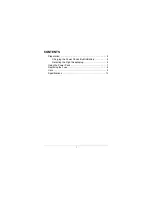
26
Important hints
agents may damage the labeling or plastic and lacquered
surfaces.
1.11 Measurement Categories
This instrument is designed for measurements on circuits
that are only indirectly connected to the low voltage mains
or not connected at all. The instrument is not intended for
measurements within the measurement categories II, III or
IV; the maximum potential against earth generated by the
user must not exceed 150V
DC
(peak value) in this applica-
tion. The following information refers solely to user safety.
Other aspects, such as the maximum voltage, are de-
scribed in the technical data and must also be observed.
The measurement categories refer to transients that are
superimposed on the mains voltage. Transients are short,
very fast (steep) current and voltage variations which may
occur periodically and non-periodically. The level of poten-
tial transients increases as the distance to the source of
the low voltage installation decreases.
❙
Measurement CAT IV
: Measurements at the source of
the low voltage installations (e.g. meters)
❙
Measurement CAT III
: Measurements in building
installations (e.g. power distribution installations, power
switches, firmly installed sockets, firmly installed engines
etc.).
❙
Measurement CAT II
: Measurements on circuits
electronically directly connected to the mains (e.g.
household appliances, power tools, etc.)
❙
0
(instruments without measured measurement
category): Other circuits that are not connected directly to
the mains.
1.12 Switching the Mains Voltage and
Replacing a Fuse
Switching the Mains Voltage
Prior to operating the instrument, please check if the
available mains voltage (115 V or 230 V) corresponds to the
value indicated on the voltage selector of the instrument. If
this is not the case, the main voltage will need to be
switched. The voltage selector is located on the back of
the instrument (see Fig. 1.1).
Replacing a Fuse
The input line fuses are accessible externally. The integral
plug for a cooling unit and the fuse holder form a single
unit. A fuse may only be replaced if the instrument has
been disconnected from the mains first and if the power
Fig. 1.1:
Voltage selector
for HM8143
cable has been removed. The fuse holder and power cable
must be undamaged. Use a suitable screwdriver (with a
blade width of approximately 2 mm) to push the plastic
locking mechanisms to the left and right side of the fuse
holder inwards. The insertion point is marked by two
slanted guides on the casing. When unlocking the
mechanism, the fuse holder will be pushed outwards by
compression springs and it can then be removed. The
fuses are now accessible and can be removed as
necessary.
Please note that the protruding contact springs must not
be deformed. It is only possible to insert the fuse holder if
the guide points toward the connector. The fuse holder will
be inserted against the spring pressure until both plastic
locking mechanisms lock into place.
Types of fuses:
Size 5 x 20 mm; 250V~,
IEC 60127-2/5
EN 60127-2/5
Line voltage
Correct fuse type
230 V
2 x 3.15 A slow blow (T)
115 V
2 x 6 A slow blow (T)
1.13 Batteries and Rechargeable Batteries/Cells
1. Cells must not be disassembled, opened or crushed.
2. Cells and batteries may not be exposed to heat or fire.
Storage in direct sunlight must be avoided. Keep cells
and batteries clean and dry. Clean soiled connectors
using a dry, clean cloth.
3. Cells or batteries must not be short-circuited. Cells or
batteries must not be stored in a box or in a drawer
where they can short-circuit each other, or where they
can be short-circuited by other conductive materials.
Cells and batteries must not be removed from their
original packaging until they are ready to be used.
4. Keep cells and batteries out of reach of children. Seek
medical assistance immediately if a cell or battery was
swallowed.
When changing the mains voltage, it is essential to replace the
fuse. Otherwise the instrument may be destroyed.
It is hazardous and not permitted to repair a defective fuse or to
use other tools to bypass the fuse. Resulting damage to the in-
strument are not covered by the warranty.
If the information regarding batteries and rechargeable batter-
ies/cells is not observed either at all or to the extent necessary,
product users may be exposed to the risk of explosions, fire and/
or serious personal injury, and, in some cases, death. Batteries
and rechargeable batteries with alkaline electrolytes (e.g. lith-
ium cells) must be handled in accordance with the EN 62133
standard.
















































